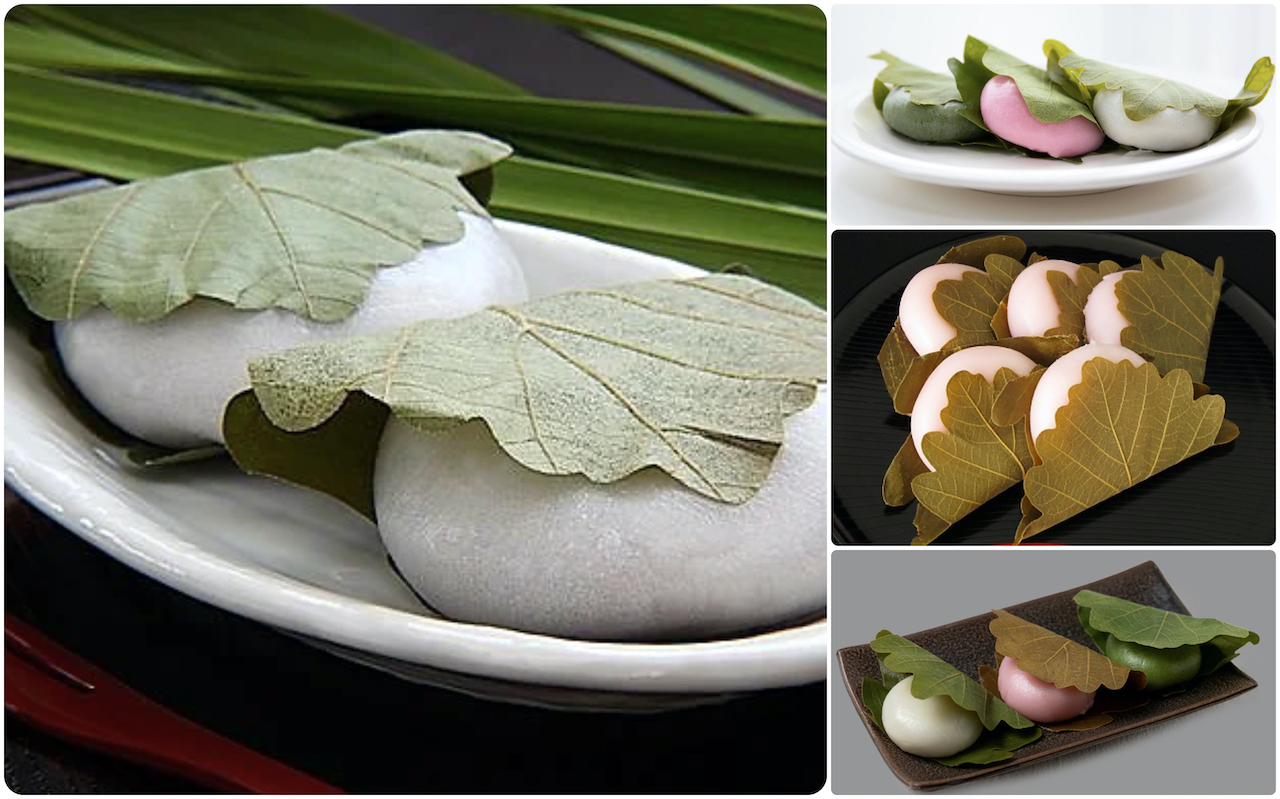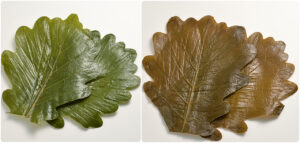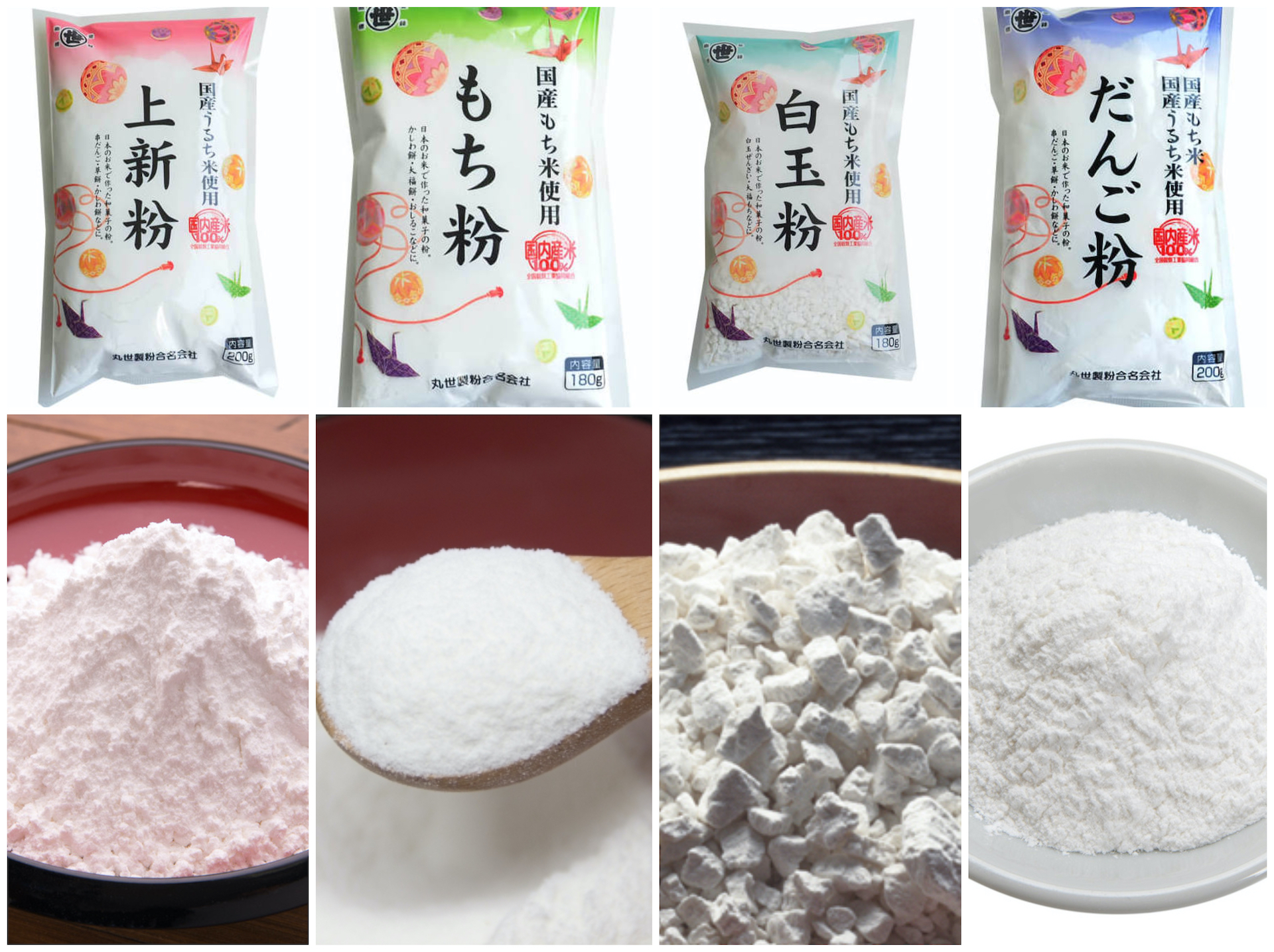
So named because this sweet is wrapped in kashiwa (oak) leaves, kashiwa mochi 柏餅 is enjoyed during the Golden Week holidays, early in May. Historically this sweet is associated with Tango no Sekku (also known as Kodomo no Hi or Children’s Day).
What’s the connection? Oak trees represent strength and longevity because the leaves do not fall from their branches until new shoots appear in early summer. This analogy to generational continuity and vigor appeals to Japanese family values.
The oak leaves used as wrappers for the sweets are not consumed (unlike sakura mochi sweets wrapped in edible cherry leaves) but they do contribute a pleasant aroma. In addition, oak leaves contain eugenol, a chemical compound also found in cloves, that exhibits anti-bacterial properties.

If you’d like to try your hand at making kashiwa mochi, friend-and-colleage NAMI CHEN of Just One Cookbook has an excellent video tutorial on her website.

米粉 various rice flours
Kashiwa mochi is made by mixing joshinko rice flour with water and kneading it to make a soft, sticky mass. The mixture is then steamed (many modern kitchens use a microwave oven) and kneaded until smooth and elastic. The mochii dough is divvied up into individual portions (usually 10 since the oak leaves used to wrap the sweets are sold in packets of 10), each rolled out into an oval. A fiilling of sweet bean jam or sweet miso is then enclosed in the mochi dough. Finally each sweet is wrapped in an oak leaf.
There are many different rice flours. Download the GUIDE to RICE FLOURS I created to help you choose the right one for whatever recipe you are making.
To find out more the Golden Week holidays read my May 2024 newsletter.
Visit PROJECT: Cooking with Early Summer Bounty for inspiration and instruction in making dishes with fresh peas and fava beans.




